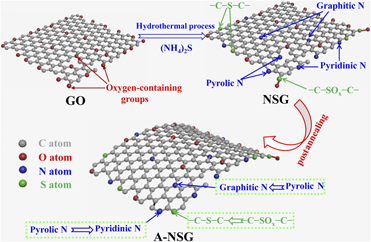Crossref Citations
This article has been cited by the following publications. This list is generated based on data provided by
Crossref.
Mishra, Ranjit
Prasad, Pushp Raj
Panda, Prajnashree
and
Barman, Sudip
2021.
Highly Porous Activated N-Doped Carbon as an Ideal Electrode Material for Capacitive Energy Storage and Physisorption of H2, CO2, and CH4.
Energy & Fuels,
Vol. 35,
Issue. 17,
p.
14177.
Zhang, Jinming
Qian, Yezheng
Nan, Haiyan
Gu, Xiaofeng
and
Xiao, Shaoqing
2021.
Large-scale MoS2(1−x)Se2x
monolayers synthesized by confined-space CVD.
Nanotechnology,
Vol. 32,
Issue. 35,
p.
355601.
Chen, Liang
Hu, Liying
Xu, Chenxi
Yang, Lanyun
Ren, Wenqing
Wang, Wei
Li, Gangyong
Zhu, Yucan
and
Hou, Zhaohui
2022.
Flexible self-supporting metal-free N-doped graphene membrane as an electrocatalyst for oxygen evolution reaction.
Applied Surface Science,
Vol. 604,
Issue. ,
p.
154667.
Muduli, Sadananda
Kaliprasad, Y.
and
Martha, Surendra K.
2022.
Lead–carbon hybrid ultracapacitors fabricated by using sulfur, nitrogen-doped reduced graphene oxide as anode material derived from spent lithium-ion batteries.
Journal of Solid State Electrochemistry,
Vol. 26,
Issue. 9,
p.
2013.
Chen, Liang
Hu, Liying
Xu, Chenxi
Yang, Lanyun
Wang, Wei
Huang, Junlin
Zhou, Minjie
and
Hou, Zhaohui
2023.
Preparation of self-supporting Co3S4/S-rGO film catalyst for efficient oxygen evolution reaction.
Carbon Letters,
Vol. 33,
Issue. 7,
p.
2087.
Chen, Liang
Yang, Lanyun
Xu, Chenxi
Chen, Kechun
Wang, Wei
Yang, Liming
and
Hou, Zhaohui
2023.
Dual-template synthesis of interconnected 3D hollow N-doped carbon network for electrochemical application.
Carbon Letters,
Vol. 33,
Issue. 2,
p.
409.
Aydin, Kubra
Woo, Seongwon
Kanade, Vinit Kaluram
Choi, Seulgi
Ahn, Chisung
Lim, Byungkwon
and
Kim, Taesung
2023.
A study of highly activated hydrogen evolution reaction performance in acidic media by 2D heterostructure of N and S doped graphene on MoOx.
Carbon Energy,
Vol. 5,
Issue. 11,
Chen, Liang
Liu, Yanping
Wang, Yang
Li, An
Zhou, Binbin
Xu, Chenxi
and
Hou, Zhaohui
2024.
Facile large–scale synthesis of 3D crumpled N, O co–doped graphene nanosheets and their electrochemical properties.
International Journal of Hydrogen Energy,
Vol. 53,
Issue. ,
p.
256.
Zhou, Menglin
Zhang, Lin
Shan, Xuefei
Chang, Fengqin
Chen, Wentong
An, Xuguang
and
Hu, Guangzhi
2025.
Hydrangea-like B/N co-doped carbon-based electrochemical sensors for the efficient and sensitive detection of aristolochic acid in Aristolochia.
Chinese Chemical Letters,
p.
111073.
